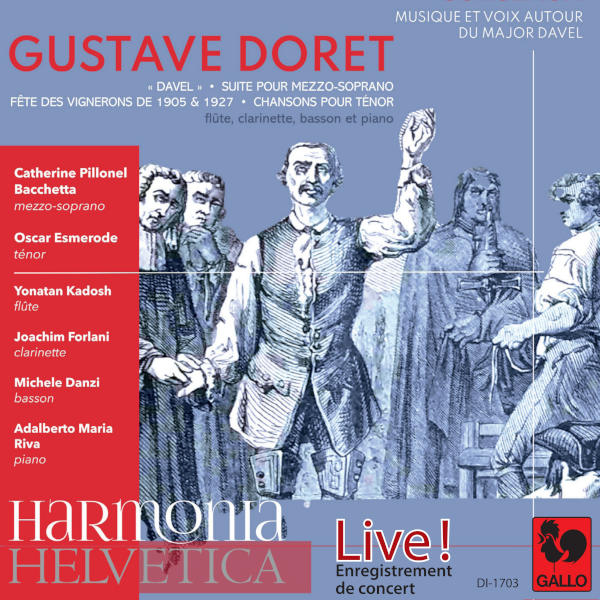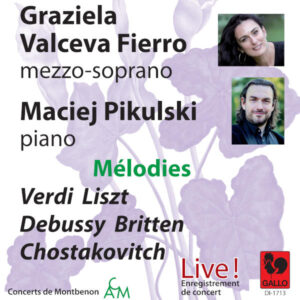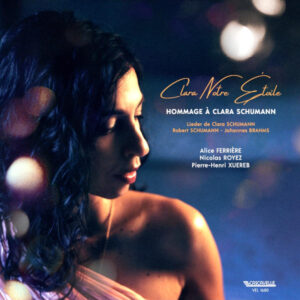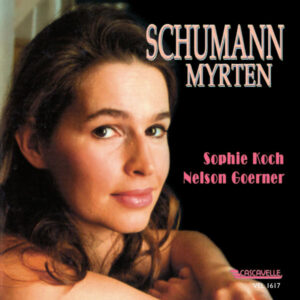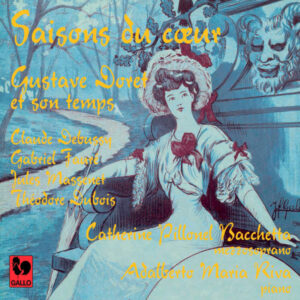Gustave Doret (1866-1943) is, par excellence, the archetypal Vaud composer in terms of his roots and character. His attraction to France, where he lived and worked, did not prevent him from developing a characteristic repertoire in many fields, including that of choral and vocal music, which he was particularly fond of. He was equally interested in monody and polyphony, leaving us a legacy of emblematic scores. His faithful collaboration with the playwright René Morax (1873-1963), who was also an excellent musician, bears witness to this. It was precisely at the famous Théâtre du Jorat, in Mézières, this “rustic Bayreuth” – in the words of the eminent journalist Jean Nicollier (1894-1968) – that the important incidental music for Davel, a mystery in five parts and twenty-one episodes, was premiered on May 19, 1923. The aim was to commemorate the two-hundredth anniversary of the Waldensian hero’s death. Morax compared the Major’s fate with that of Joan of Arc. In doing so, he gave a significant role to the “Belle Inconnue”. The demanding and renowned choral conductor Hermann Lang (1883-1977) was in charge of this new creation.
This recording features excerpts from Doret’s music, transcribed by Swiss clarinettist, composer, and arranger Joachim Forlani.
The Suite “Davel” opens with the Prelude, which originally featured a trumpet blast whose spirit symbolized “Davel’s haughty character”, in the words of biographer and composer Jean Dupérier (1886-1976).
The fresh song Il était une fille, in G Major, appears in the 1er Episode of Act I, set in La Maison de Cully during the grape harvest. The strange “Belle Inconnue” bids farewell and then disappears, giving Davel a sense of disquiet.
The March for fifes and drums, with its Bernese accent, is set in 2e Episode of the same act, entitled Villmergen, in the canton of Aargau, in reference to the battle of July 24, 1712 in which the Protestants prevailed over the Catholics.
Mon père m’a envoyée (jeune pucelette), in F Major, is found in the first Episode of Act I. This song conveys a sense of relaxation.
The melancholy Pastorale d’Automne (Les troupeaux sont aux champs), in F Major, a celebration of October’s beauty, appears in the Prelude after a few bars of the Marche Funèbre, in C minor. It appears again in Act II, in the 3e Episode.
In 1723, the fateful year of Jean-Daniel-Abraham Davel’s execution, the 4e Episode of the same act still evokes La Maison de Cully, with Psaume XVII by French poet Clément Marot (ca 1496-1544), Seigneur, écoute mon bon droit, au ton grave. Dorethas rightly treated it in Dorian mode, which here refers to the spirituality of Davel, who, according to Morax, “put on his great uniform to speak to God”.[show_more more=”Show More” less=”Show Less”]
The calm Pastorale d’Automne is repeated, by the horn, in the 7e Episode of Act Three. Then, just before the 8e Episode, Davel’s proud Marche des bataillons takes its place. The theme of Marot’s Psaume is briefly reintroduced in 16e Episode of Act Five. In the next episode, in prison, Davel’s dream (Heureux celui qui a thif de justice), in C Major, is sung, while the Major’s mother and the “Belle Inconnue” appear.
The tragic 18e Episode features the moving Marche funèbre as the procession moves to its rhythm. This is followed by the luminous Pastorale d’Automne, before the tone darkens with the return of the Marche funèbre. Davel’s Marche des Bataillons concludes the score.
At the time of the creation of his incidental music, Doret had just lost his elder sister, to whom he was close. As he wrote in Temps et Contretemps (Fribourg, 1942), he drowned “in rehearsals to forget the grief of the moment”. The success of the performances comforted him. Davel is a demanding composition that he was able to conceive, however, in Satigny, in the canton of Geneva, in an “atmosphere of serenity”. For his part, Morax was as sober as possible, avoiding any form of grandiloquence. This is an exemplary collaboration between these two designers.
Mirage (Le rythme triste de l’automne), on a poem by Nietzschean Charles Vellay (1873-1953), published around 1902, for voice and piano, with flute ad lib, is in E minor. The work is dedicated to Madame Charles Dettelbach, a singer in her own right.
The Tarantelle (1896), based on a text by Genevan composer Marc Monnier (1829-1885) – Aux cieux la lune monte et luit – is in D major. It was dedicated to the journalist and friend Georges Gaulis (1864-1912). The title page bears the inscription: “Chanson de Lauzières”, certainly in reference to Achille de Lauzières (1818?-1894), the famous lyricist of Neapolitan songs.
Gustave Doret composed the music for two Fêtes des Vignerons: in 1905 and again in 1927. The first was conceived in collaboration with the faithful René Morax, while the second was with the young Genevan man of letters Pierre Girard (1892-1956).
1905 was both the culmination of the Fêtes du XIXe siècle and a resounding success. Doret had chosen to move away from the popular tone adopted by his predecessor Hugo de Senger (1835-1892). Winter was placed at the head of the dramaturgy to allow the autumnal Bacchus to conclude. Morax’s biblical inspiration was, in a way, the ideal of this Fête.
The 1927 edition took place in a climate of great uncertainty, with many seriously affected winemakers abandoning their task. Morax recused himself while Arthur Honegger (1892-1955) was approached. Doret eventually prevailed. Folk song and the choral repertoire were then given singular prominence.
The extracts chosen for this recording were also transcribed by Joachim Forlani under the title Suite «La fête des Vignerons».
Le Printemps – À qui donner la Rose? (1927), in D Major, was originally a unison chorus with orchestral accompaniment.
L’Hiver – La Chanson du Blé qui lève (1927) – Sous le ciel noir de février – in Bb Major, was originally a chorus for solo tenor and 4 male voices for the a cappella refrain.
Le Printemps – La coquille (1905) – Chanson de Claudine – Dans le mois de juin – in G Major, was originally a 1-voice song.
L’Automne – La Chanson du Pressoir (1927) – Que la tonne s’emplisse – in F Major, was originally a 1-voice song with refrain for 4-voice mixed a cappella choir.
La mi-été – La fille du Vigneron (1905) – L’était un vigneron – in F Major, was composed to poetry by Juste Daniel Olivier (1807-1876), the cantor of the canton of Vaud.
L’Automne – Chanson de la Belle Julie (1927) – Tous les gars ont dansé – in G Major, was originally a 4-part a cappella chorus.
Gustave Doret, an accomplished man of the theater, is certainly best known for a type of repertoire in which the voice plays the leading role. However, he was also the author of a delicate Suite tessinoise (1917/20), and, again, a String Quartet, in D Major (1924), alas completely forgotten. He was also a renowned conductor and an inspired writer. As an essential witness to a fertile era in Swiss music, Doret continues to inspire musicological research, as his contribution is as complex as it is fertile.
Original French Text by James Lyon
